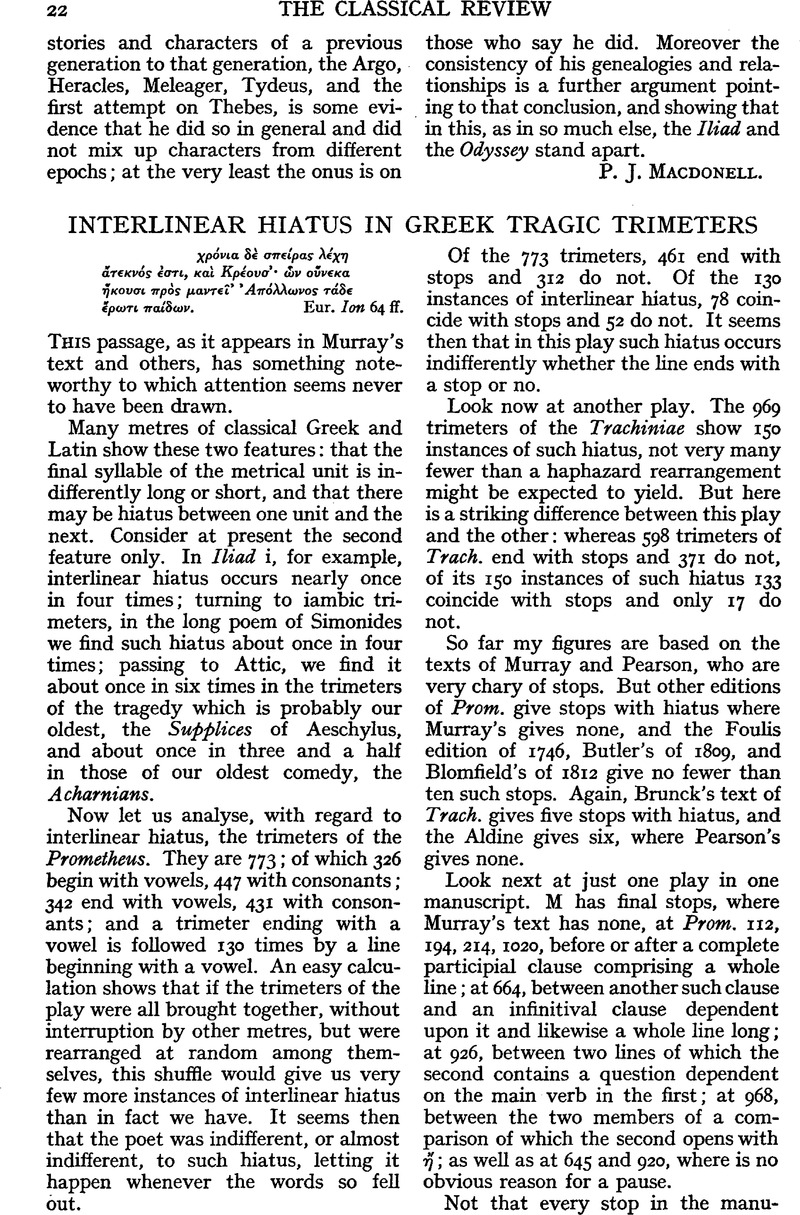No CrossRef data available.
Article contents
Interlinear Hiatus in Greek Tragic Trimeters
Published online by Cambridge University Press: 27 October 2009
Abstract

- Type
- Review Article
- Information
- Copyright
- Copyright © The Classical Association 1941
References
page 24 note 1 Even in trimeters we have ὦ οὗτος, with hiatus, in S. Aj. 89, O.C. 1627.
page 25 note 1 Including Alc. 66, where there is doubt between μ⋯τα and μετ⋯, and Her. 530 and Hel. 420, where π⋯ρα stands for a verb.
page 25 note 1 Similarly a proper name is often appositional and can bear commas, as in ![]() ,…, Hip. 581 f.
,…, Hip. 581 f.
page 25 note 2 ‘Saepe indicat hiatus quo modo poeta versus suos recitari voluerit’, says Murray, speaking of lyrics, in the preface to his text of Aeschylus (p. ix).
Interlinear hiatus among trimeters needs to be considered in relation to enjambment, of which for the present I will say only that there is no hiatus after any ending peculiar to Sophocles (τεκα⋯ O.T. 267, Ant. 171, Phil. 312; οἱ Phil. 263; ![]() O.T. 553, 995, 1056, Ant. 78, Trach. 383, Phil. 422, 449, O.C. 265, 290, 577; εἰ Trach. 462, O.C. 993) except in
O.T. 553, 995, 1056, Ant. 78, Trach. 383, Phil. 422, 449, O.C. 265, 290, 577; εἰ Trach. 462, O.C. 993) except in ![]() O.T. 585.
O.T. 585.


